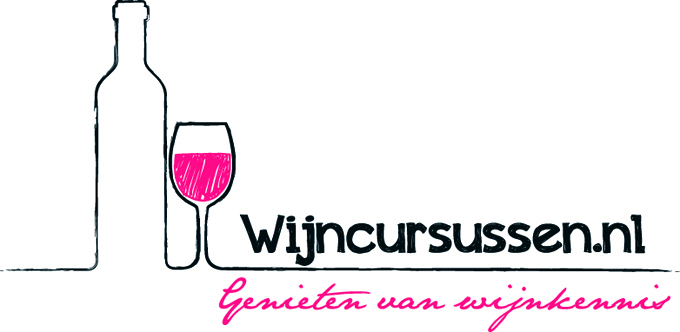While certainly few of us missed China’s rise to the position of a major economic power, that newly established prowess continues to fight the biased western preconception of wine and China. On the one hand we have the image of the Chinese wine drinker pouring cola in her Chilean Cabernet or ice cubes in his red Bordeaux, on the other the Chinese market is perceived as a wine utopia where every kind of wine – the great, the good and the ugly – will be sold in huge quantities one day very soon. These dangerously outdated preconceptions, however, ignore the burgeoning truth: the steadily growing consumption and production of wine in China.
One visible example of these changing attitudes includes the success of Shanghai’s Prowine China. Since 2013, this event has been co-organized by Messe Düsseldorf — responsible for the world’s largest international wine fair, ProWein — and UBM World. The next fair will take place from 13 – 15 November 2018, with 700 wine and spirit producers and approximately 15,000 visitors expected to attend.
Year after year, China continues to grow in both numbers and experience as a producer of wine. In fact, few outside China realize that Changyu, based in Yantai in Shandong Province is the third largest wine brand in the world with annual sales of 135 million liters, exactly equal to the Californian E. & J. Gallo brand! Great Wall — owned by state-owned COFCO — is also one of the world’s ten largest wine brands with annual sales of 63 million liters.
Although Chinese law no longer allows this practice, in the West it is still often assumed that much of these sales are accounted for by wine imported in bulk, then sold as Chinese wine. In fact, Chinese bulk wine imports are really low. Germany and France respectively import almost six times and more than four times as much bulk wine as China! In 2016 production from domestic Chinese vineyards was 11.4 million hectoliters; more than Bordeaux, Germany or Portugal. That satisfies almost two thirds of domestic demand. And in 2017, sixteen Chinese wineries were granted an “estate wine” trademark as part of government efforts to establish official quality standard for those producing wines from their own vineyards, many of which will be attending ProWine China 2018.
During the last decade China has made considerable progress in quality wine production through improvements in viticulture and winemaking. That imported foreign know-how often played a role in this is neither surprising nor exceptional. For example, many foreign companies played a role in the renaissance of Chilean wine during the last 30 years, including Torres of Spain, Château Lafite Rothschild and Château Mouton Rothschild both of Bordeaux. The situation in China is almost directly comparable. Like Chile, China also has a long history of wine production, the original wine industry having faded during the Ming Dynasty, and a new beginning having come in the late 19th century.
Torres also has a joint venture with Grace Winery in Shanxi Province, and Domaines Barons de Rothschild (Lafite) has a 10-year vineyard project in China’s Shandong province. The first vintage of Lafite’s China project, Domaine de Penglai, is expected to be released this coming fall. Château Changyu Lenz Moser joint venture in the Ningxia autonomous region (1,330 kilometers west from Beijing) also deserves a mention, because many experts consider this to be a Chinese region with great potential for high quality Cabernet Sauvignon reds. In fact, the entire range of Changyu Lenz Moser wines were met with great reception from producers and consumers alike at Prowein 2018. “All three red wines showed incredibly well, from the Moser XV Cabernet Sauvignon 2016,” Stefan Nietsche of Sansibar, Sylt lauded, “ with its youthful power and velvety grace – without a trace of any barrel influence — to the Grand Vin which can easily hold its own against wines more than twice the price.”
The cool semi-desert climate of Ningxia has an annual average of about 3,000 sunshine hours per year compared with just 2,050 in Bordeaux. There is also plentiful water for drip irrigation, so the very low rainfall in Ningxia is not a problem, rather it is an advantage because it minimizes fungal disease problems (Oidium and Peronospera). This situation in the region is rather comparable to Washington State in the Pacific Northwest of the USA where Cabernet Sauvignon flourishes, but very different to that on the Shandong Peninsula where summer humidity is high.
A number of other promising wine regions are making names for themselves. The autonomous Xinjiang region – and its Yanqui subregion — for example, is enjoying a true rising star status. In 2017, RVF China magazine together with the Yanqi government organized a masterclass for ProWein China, naming it at the time: “the most promising wine region in China.” Following its success, rumors even point toward a featured Xinjiang pavilion at ProWine China 2018. Other regions are seeking to set new standards though successful cultivations of lesser known varieties such as Marselan in the Huailai county of Hebei Province (Sino-French Demonstration Vineyard). Still others are experimenting with less accessible and familiar terrain, such as the high altitude locations of Yunnan province in the Shangri-la region. Even powerful Cabernet Sauvignon reds from here can have a mountain freshness and striking elegance!
No doubt in the middle of the 21st century all the experts will look back at the dominance of Cabernet Sauvignon (76.5%) and Merlot (12%) in contemporary Chinese vineyards and describe it as a phase in the development of the nation’s wine industry. This certainly reflects the intense interest of Chinese consumers in red Bordeaux. If you add in wines purchased through third countries, then China accounts for about 40% of all Bordeaux’s wine exports!
The root of this focus lies in the judgment of millions of new Chinese wine consumers during the last twenty years that Bordeaux is the world’s leading producer of high quality red wines and that the Premier Grand Cru Classé Château Lafite Rothschild (usually more than 85% Cabernet Sauvignon) occupies first place in that region’s hierarchical classification. This lead to a fixation with Château Lafite that only moderated from 2012 as the over-heated market cooled and Chinese consumers discovered some of the many other exciting wines from Bordeaux. When considering that situation it’s important to remember that even today, after the rise of Napa Valley/California, Tuscany and Piedmont in Italy, etc., etc., etc. some important Western experts still concur with the assessment of Chinese consumers.
That said, waves are being made with more than just the tried and true. Take Marselan, a 1961 French crossing of cabernet sauvignon and grenache, for example, being pointed to as China’s up and coming “signature grape.” First introduced to Chinese vineyards as recently as 2001 (2.75ha), plantings have attracted wide regional interest and today number over 267ha. The variety shines under quality winemaking with its deep colors, rich and complex flavors, and soft tannins. In 2017, Grace Vineyard of Shanxi Province took home the “Best Red Single-Varietal” medal in the Decanter Asia Wine Award for its 2015 Marselan Tasya’s Reserve.
The fundamental Chinese preference for red wine over white has deep cultural roots. On top of that, the explosion in new Chinese vineyard planting occurred during the global red wine boom (from late 1991). No wonder the Chinese wine industry has the focus it does! However, the growing interest in, for example, Italian and Chilean wines – China is currently the number 1 market for Chilean wines – suggests that other role models for Chinese wines will soon emerge. Local examples are already enjoying great success: “When it comes to white wines,” Lenz Moser of Chateau Chanyu Lenz Moser said of his 2017 release, “the white cabernet stole the show – distinctive, innovative and above all else a new taste profile ideally showed the tropical aromas, the rich flavors, and the gentle, easy finish enchanted the tasters.”
With an eye and ear out at ProWein 2018, one heard the buzz. Visitors were intrigued with the idea of wine from China. Moreover, the familiar flavors of the Cabernet Sauvignon in the ProWein Forum tasting was largely positive. In spite of Planet Wine’s apparent dynamism, wine remains a relatively slow moving industry. It takes years to establish new vineyards or to replant existing ones. China’s winemakers are just beginning to make first class wines and as their knowledge and experience expand we can expect not only more exciting wines, but also more diverse ones. Within the vast expanse of China there are so many different climates and a good many of these are suitable for growing for one kind of wine or another. The story has only just began!










